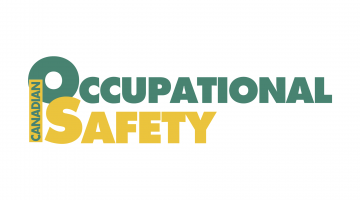Training
IWH research on occupational health and safety (OHS) training focuses on its effectiveness—from the effectiveness of delivery methods and contents to the effectiveness of training programs overall. OHS training, mandated by workplace health and safety laws in jurisdictions across Canada and beyond, is considered an important part of managing workplace hazards and risks. Such training may involve instruction on identifying occupational risks and how to control them, learning about safe workplace practices and how to properly use personal protective equipment.
Featured

At Work article
Safer work practices, lower injury rates maintained two years after Ontario’s working-at-heights training came into effect: study
In 2015, the Ontario government implemented a working-at-heights (WAH) training standard to ramp up fall prevention efforts. An IWH study team has now gathered two additional years of data on the effectiveness of this training requirement—both on work practices and injury rates.
Published: November 3, 2023

Research Highlights
Comparing real-time online work-related training with face-to-face formats
Work-related training delivered through synchronous or real-time online formats can be just as effective as face-to-face training in building workers’ knowledge or skills. This finding is based on a relatively sparse body of research looking at training aimed at adult learners at the undergraduate level or higher.
Published: August 2022
Journal article
Journal article
A rapid review of systematic reviews on the effectiveness of synchronous online learning in an occupational context
Published: American Journal of Industrial Medicine, May 2022

IWH in the media
Ontario ministry could recommend changes to working-at-heights training
A testimony from William Roy, a senior Ministry of Labour, Training and Skills Development (MOL) policy manager, revealed potential changes to working at heights (WAH) training which could be implemented as soon as April.
The revelation came on day three on Ontario’s swing stage inquest into the 2009 scaffolding collapse at an Etobicoke high rise, in which four people died. Roy's testimony included suggestions for training reforms, contained in a Feb. 2019 report conducted by the Institute for Work & Health (IWH) and commissioned by the Ministry.
The revelation came on day three on Ontario’s swing stage inquest into the 2009 scaffolding collapse at an Etobicoke high rise, in which four people died. Roy's testimony included suggestions for training reforms, contained in a Feb. 2019 report conducted by the Institute for Work & Health (IWH) and commissioned by the Ministry.
Published: Canadian Occupational Safety , February 2022

IWH in the media
Inquest witness pressed on Working at Heights training outcomes
Testimony from a senior Ministry of Labour, Training and Skills Development (MOL) policy manager on day three of Ontario’s swing stage inquest Feb. 2 revealed the ministry may be recommending changes to Working at Heights (WAH) training as soon as April. Don Wall reports.
Published: Daily Commercial News, February 2022
Project
Project
Evaluating the effectiveness of distance learning in delivering Ontario's JHSC certification training
An IWH team is measuring the relative effectiveness of three different modes of delivering training: in-class, distance and e-learning.
Status: Ongoing

Research Highlights
Evaluating the effectiveness of mandatory working-at-heights training standards
The introduction of a mandatory training standard for construction workers using fall protection equipment is associated with a 19.6 per cent reduction in the incidence rate of lost-time claims due to falls targeted by the intervention. This decline is larger than an overall decline in injuries in the sector during the same time frame. Reductions in incidence rates are also largest among the smallest employers.
Published: September 2020
Journal article
Journal article
Preventing fall-from-height injuries in construction: effectiveness of a regulatory training standard
Published: Journal of Safety Research, September 2020

Tools and guides
Safe Work Toolkit for Newcomers (Ontario)
This toolkit contains everything needed to deliver instructional sessions to newcomers in Ontario on their occupational health and safety (OHS) and workers' compensation rights and responsibilities.
Published: December 2019

IWH in the media
New beginnings: Recent immigrants need more support to reduce their heightened risk of injury
A recent study spanning across the United Kingdom, Australia and Canada found newcomers are at a higher risk of work-related injury and illness. Canadian Occupational Safety editor Amanda Silliker speaks to health and safety professionals and researchers in Canada, including IWH's Dr. Basak Yanar, about ways to reduce risks among recent immigrants.
Published: Canadian Occupational Safety, August 2019

At Work article
Ontario’s working-at-heights training led to safer practices, reduced injury claims rates
Ontario's mandatory training standard for construction workers at risk of falls from heights was effective in reducing claims rates—especially among small employers and high-risk subsectors—an IWH evaluation study found.
Published: April 2019